Matador Network's Blog, page 1182
January 15, 2019
Best things to do in Svalbard

When it comes to epic trips, few can top a visit to the Arctic Circle. With the chance to spot polar bears and even visit some of the planet’s most remote glaciers, you’re guaranteed to go back home with some pretty sweet stories to share.
Head to Svalbard, Norway, this summer for a chance to make once-in-a-lifetime memories — think spending the night on a glacier and ethically observing polar bears in the wild (or in your hotel room, eating chocolate, if you’re really lucky) all in one trip.
Located high up in the Arctic Circle, the archipelago of Svalbard is one of the world’s northernmost inhabited areas; the rugged terrain rarely makes it above freezing temps, even in the summer. This explains why the tiny area is home to just 2,667 human residents (as of the 2016 census) and around 3,000 polar bears — as well as Svalbard reindeer, Arctic foxes, the northern lights, and 24-hour sun during the summer. The 37 to 44 degrees Fahrenheit average temperatures in July are considered mild for the area, making it a harsh climate but also the perfect summer vacation alternative if you’re just about sick of tropical island getaways.

Photo: ginger_polina_bublik/Shutterstock
To make exploring the icy region doable, adventure travel company Off the Map Travel has launched the ultimate Arctic adventure. The new Night on a Glacier program (around $8,353 per person for a five-day excursion) is available from May through September 2019 and is now open for booking.
“This is a spectacular opportunity for adventure lovers,” said Jonny Cooper, founder of Off the Map Travel. “Svalbard is one of the world’s best spots for seeing wildlife, with May to September the optimal months, as the snow has melted. And at the expedition lodge, you’ll enjoy all manner of amenities and comforts — with the chance to see polar bears.”

Photo: Off the Map Travel
Travelers who take the trip will experience a night on a glacier — in a prime viewing spot for a peek of Norway’s resident polar bears roaming in the wild, no less — at Nordenskiöld Lodge, a cozy, wooden cabin at the foot of a blue glacier. Located in the middle of the remote Spitsbergen island, it’s also the world’s northernmost commercial cabin. In the isolated and near-silent frozen landscape, you can hear the ice cracking and creaking as the glacier continues along its slow journey — an activity we’ll refer to as “glacier listening.” Those who yearn for new and different experiences will find it hard to resist the eerie sounds of a moaning glacier, especially while polar bears prowl in the surrounding barren landscape.
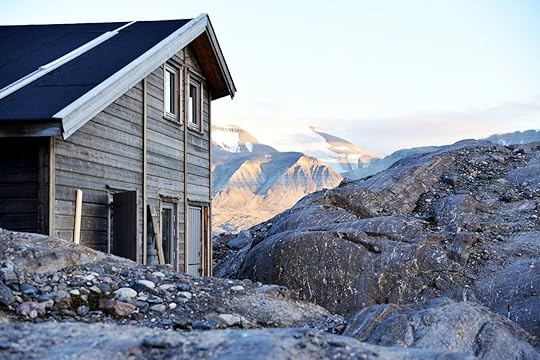
Photo: Off the Map Travel

Photo: Off the Map Travel
The Night on a Glacier program begins in Longyearbyen with a dog sledding experience, which is followed by a guided zodiac boat cruise around the coast in search of walruses, whales, and polar bears en route to Nordenskiöld Lodge. In addition, during the trip, participants will be able to partake in a variety of winter activities like a guided glacier climb, kayaking, and a photo walk, with wildlife encounters expected throughout the trip. Each night, travelers can return to the lodge and warm up from their snow-filled days with a session in the sauna — a pretty stellar and unique way to spend your summer vacay. 

More like this: 20 things you did not know about Svalbard and the animals who live there
The post This summer, spend a night on a glacier with polar bears appeared first on Matador Network.

How to travel with a severe allergy

It can be a pretty dim moment when you accept the fact that you suffer from a nut allergy. The careless days of ordering anything on the menu are far behind you after realizing that if you and a nut were in the ring, you’d lose. There is some solace in that you’re not alone, though — in the US, an estimated 15 million people have an allergy of some kind. Another bit of solace is that a nut or other food allergy doesn’t need to hinder your explorations. You don’t need to become Bubble Boy.
I’ve been traveling the world for years with a severe tree nut allergy (which includes cashews, walnuts, hazelnuts, and almonds), and I’ve managed to not let my food allergy get in the way of my vagabond lifestyle. Sure, I have to take extra precautions, but no more than my lactose-free, gluten-free, soy-free, wheat-free, vegan, vegetarian, pescetarian, kosher, halal, (etc., etc.) comrades.
That’s not to say that allergies can be taken lightly. During an allergic reaction to a food, the body’s immune system mistakes a protein in the food for a harmful virus or bacteria. Your body immediately sends out IgE antibodies, known histamines, to attack it. Histamines create sensations in the body that fend off bacteria and act as your body’s natural defense mechanism. The sensations can be itching, sneezing, nausea, anxiety, and, in severe cases, swelling of the throat, tongue, and nostrils. For some, the histamines can be triggered by even the slightest contact between the food and the person, meaning that prevention is of the utmost importance.
How to prevent an allergic reaction while traveling
Before you head off on an adventure, make sure you know your body and your allergies in order to prevent reactions occurring in the first place. Professional advice from either an allergy specialist or your doctor is best.
Be sure to purchase travel insurance that covers all medical costs should something go wrong and you have a severe allergic reaction that requires hospitalization. Pack your allergy essentials recommended by your physician, including anti-histamines and EpiPen auto‑injectors. Keep these with you at all times, including under your seat during your flight. Note that EpiPens have an expiration date, so if you’re traveling long-term be sure your supply will last throughout the duration of your trip.
A very effective travel tool is an allergy translation card that can be purchased online. These cards, available in hard copy or on an app, list your allergies in over 40 languages. An alternate option is Google Translate. If you’re not always on Wi-Fi, you can screenshot the translation and show it to the waiter and chef before you order.
Allergic reactions when eating international cuisines
Prior to embarking on your journey, do some research about the cuisines of the countries you will travel to. Places like Thailand, China, Brazil, and Mexico use a lot of peanut and peanut oil in their dishes. Chefs in India and Sri Lanka commonly use tree nuts, such as cashews, and add them in curries. Some dishes will be obvious about the addition of nuts (for example, a cashew nut stir-fry), but others may not (massaman curry cooked with a tree nut thickener).
I’ve had two incidents in India where I’ve asked the chef if there were cashews in a particular Indian curry, to which they replied “no” without informing me that there were cashews used in the thickening paste. If you’re uncertain about a meal, always ask to read the ingredients or opt for a completely different meal or restaurant.
Some foods to watch out for when you’re traveling with a nut allergy are curries; sauces; dressings; cereals and granola; baked goods such as cakes, brownies, and muffins; vegan foods; and stir-fries that could be cooked using peanut oil.
Nuts on the road
You’re likely to encounter nuts while on airlines and other modes of transportation. It’s still common for airlines to offer peanuts as a snack or serve foods that contain nuts or traces of nuts, however, some airlines are now banning this practice.
United Airlines doesn’t serve peanuts or food cooked in peanut oil. American Airlines doesn’t serve peanuts, but still serves tree nuts. Delta will take extra precautions and bring non-peanut snacks if you give it 48 hours advance notice, as will Southwest. It’s important to note, however, that most airlines can’t 100-percent guarantee that a flight is nut-free as there are other passengers on board.
Avoid cross-contamination by taking your own food on board. Often, airline foods don’t contain a list of ingredients and there’s seldom a staff member who can answer a question about food ingredients with certainty. If you do decide to dine on airline food, contact the airline before you embark and request a nut-free meal. Remind agents of your allergy again at the boarding gate and double check the meal before you eat it. You can never be too careful. 

More like this: 10 over-the-counter medications you should always carry abroad
The post How to travel with a severe nut allergy appeared first on Matador Network.

Total lunar eclipse coming

The name of the unique celestial phenomenon might sound a bit dramatic, but then again, so is the phenomenon itself. On January 21, at around 12:12 AM EST, a total lunar eclipse called “super blood wolf moon” will be visible in the night sky. The name describes a total lunar eclipse that makes the moon appear larger and red to people on Earth. Total lunar eclipses only happen when the sun, Earth, and moon reach perfect alignment, causing the Earth’s shadow to hide the moon from view. By contrast, a total solar eclipse, like the one we witnessed in the US in 2017, is when the moon lands between the Earth and sun, blocking all light from reaching Earth.
Total lunar eclipses are the rarest type of lunar eclipses. January’s “super blood wolf moon” will be the first to hit the US in three years. If you’re wondering what produces the blood-red color, it’s because light traveling from the sun through the Earth’s atmosphere bends toward the moon, and red can pass through the atmosphere more easily than other colors, which get blocked and scattered.
The “super blood wolf moon” will be visible across North and South America, and parts of western Europe and Africa, from January 20-21. The exact moment of the moon’s eclipse will be 12:12 AM EST, but you should start watching the sky an hour earlier to witness the process. As always, for the best view, you should be as far as possible from any light pollution. 
H/T: Smithsonian.com

More like this: Mapped: The next 10 total solar eclipses around the world
The post An epic total lunar eclipse is coming to the US this month appeared first on Matador Network.

California’s foie gras ban upheld

One of the country’s most contentious legal battles has been swirling around a subject you might not have expected. Since 2012, California has been enforcing a 2004 ban on the sale and production of foie gras — a French delicacy whose method of production animal rights groups consider inhumane. Chefs and trade groups in the state have been fighting against the ban, which was just upheld once again on Monday.
If you’ve never had it before, foie gras (which means “fatty liver”) is large, butter-rich lobes of duck or goose liver pâté, produced by force-feeding ducks and geese by inserting a tube down their throats and pouring grain into it. The process is considered by many to be cruel, and when the ban went into effect, California’s only foie gras producer was forced to close. Some restaurants, however, continued to serve the controversial food product, claiming they were simply “giving it away” to guests, and a range of chefs and associated trade groups have worked to overturn the ban. An official challenge to the ban had existed in California’s Ninth US Circuit Court of Appeals, but the US Supreme Court ruling this week effectively squashed it.
Kelsey Eberly, attorney at the Animal Legal Defense Fund, said, “We are absolutely thrilled that the Supreme Court has denied the foie gras industry’s petition to hear the case, and that will allow the Ninth Circuit’s ruling upholding the law’s constitutionality to go into effect, hopefully today.”
It’s not surprising, however, that after the decision was made public, the chef’s coalition announced it will mount yet another legal challenge in federal district court. Ken Frank, owner of La Toque Restaurant in Napa, said, “I’m not entirely surprised by this, and I remain as confident as ever that once this still very misguided law is subjected to proper legal scrutiny, it will fail on a number of levels.”
So while the future of foie gras in California is uncertain, for now, the pâté is definitely off the table. 
H/T: SFGATE

More like this: The 7 healthiest cuisines in the world you should learn to cook
The post California’s ban on foie gras is here to stay says Supreme Court appeared first on Matador Network.

January 14, 2019
This sustainable Cambodian city could be the model to save Southeast Asia from over-tourism
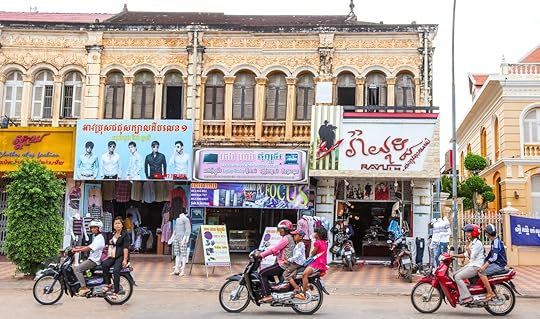
Cambodia is a country in flux. Starting in the 1970s, war and genocide tore through the green rice fields and peaceful communities of this gentle Southeast Asian country. For decades, Cambodian people lived in fear, many fleeing the country and building new homes in Thailand, Australia, and the United States. But wars don’t last forever, and since the early 2000s, Cambodia has been rebuilding at a rapid pace. The citizens are working to create a new Cambodia, reborn from the ashes of violence. And this new Cambodia attracts a lot of travelers.
In 2010, 2.5 million tourists came to Cambodia. By 2017, that number had jumped to 5.6 million. That’s a huge increase, and all these travelers are playing a big role in Cambodia’s economy by bringing in millions of dollars per year. But in a country that is still developing and recovering from decades of war, that money often does not get distributed equally, with a few elites getting most of the benefit.
So how can you as a traveler make sure that the time and money spent in Cambodia helps to lift people up instead of keeping them down? The answer is found in sustainable tourism, the practice of creating tourist attractions and companies that are designed for long-term sustainability without harming the local community or natural environment. In the last decade, Southeast Asia has seen a huge rise in these types of initiative, but nowhere more so than the small and enchanting city of Battambang.
A brief history of Battambang

Photo: GuoZhongHua/Shutterstock
Battambang is located between Siem Reap and Phnom Penh, and though often skipped over by foreign visitors, it looms large in the hearts of Cambodians. Spend a few days in Battambang and you’ll understand why it’s their most beloved city.
For hundreds of years, Battambang has been the cultural center of Cambodia. This is clear from the many temples that dot the streets, the peaks of their pagodas pointing up between the palm trees. Mornings are filled with the sounds of temple bells and Buddhist chants as the mist clears over the bright green rice fields. Parades of orange-cloaked monks move through the streets in the soft dawn light, collecting alms and offering blessings. Women spread out blankets on the streets as the city comes to life, laying out their fruits and vegetables, preparing for a day in the markets.
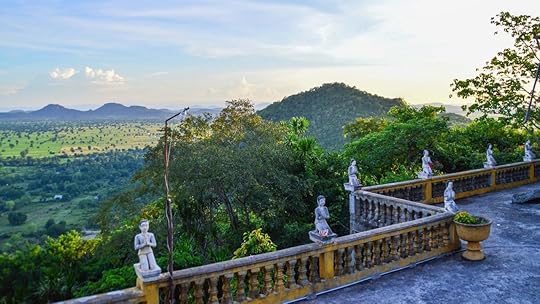
Photo: Sophie Lenoir/Shutterstock
Songs from the 1960s sang sweet odes to Battambang’s verdant rice fields and beautiful people, but this culture of peace was nearly destroyed in the 1970s and ’80s. The Khmer Rouge swept through the city and systematically killed the teachers, artists, writers, and musicians. Everyone else was forced to leave, with many fleeing to Thailand where they lived as refugees for decades. Battambang sat empty and forgotten, its temples filled only with ghosts. But when the war finally ended and the Cambodian refugees returned, they created schools and nonprofits as social organizations determined to repair what was broken and rebuild their cultural heritage.
It is these organizations, born from the dust of the genocide, that lead the sustainable tourism movement in Battambang today. They are creating a city where travelers can immerse themselves in local culture and discover what life is really like in Cambodia without being exploitative. With the help of these social enterprises, you can share authentic experiences that are helping to lift up the locals of Battambang. Here are a few of the sustainable, culturally responsible experiences you can partake in.
Experience Khmer Circus at Phare Ponleu Selpak

Photo: Phare Ponleu Selpak/Facebook
No visit to Battambang is complete without a visit to Phare, Cambodia’s premier visual and performing arts school. Phare Ponleu Selpak (PPS), or Phare for short, began in a refugee camp in Thailand in the mid-1980s when a few young Cambodians took drawing classes in the camp. During these sessions, they discovered the power of art to help them heal from their trauma. Those same refugees later returned to Battambang with a dream of building an art school.
Today, Phare houses a visual and performing art school that instructs local children on everything from graphic design to music and circus. The programs at Phare offer access to arts education and hope for a brighter future to the children of Battambang. The school hosts circus shows under the big top several nights a week, during which travelers can sit side by side with local Cambodians to watch the young circus students juggle, balance, and complete incredible acrobatic feats. In one act, a young girl hangs from the silks, contorting herself into impossible shapes as several young men dance across the stage below her, throwing themselves in the air completing backflip after backflip. The shows are powerfully high energy and performed with live music played on stage by students of the program. They perform with such enthusiasm that even the most cold-hearted tourist will be swept up in the emotion of the night.
Proceeds from the circus shows go directly back to Phare, helping to fund the continued artistic education of Cambodian children from around Battambang. The cost of a ticket to see one of the most inspirational circus shows around helps send disadvantaged kids to Phare where they can learn graphic design, animation, art, circus, music, dance, or theatre.
Take a countryside tour of Cambodia with Soksabike.

Photo: Soksabike Tours/Facebook
Imagine riding a bike through the lush Cambodian countryside. Bright green rice fields stretch away from you in all directions as you pedal along the smooth dirt road. Up ahead, a grove of palm trees bends over the road, offering shade and a chance to get out of the heat. You come to a stop. A woman is seated there under the trees, selling rice cooked in coconut milk. She offers you some, and you take a bite — rich, chewy, and delicious. The smell of the coconuts mixes with the rich scent of the rice fields and you realize that this is, by far, the best day of your trip.
That’s only a glimpse of what you’ll find on a tour with Soksabike. This social enterprise gives travelers the chance to go for long bike rides through the countryside with a local guide. The guides are college students from Battambang who are passionate about showing you what daily life is like in their country through a variety of stops along the way. You can visit a family that makes rice paper by hand or visit a man who builds and plays traditional Khmer string instruments. You get to speak with the locals, ask them questions, and learn about their lives. Your guides are your translators, sharing insights into Cambodian life that you won’t find anywhere else. The money you pay for the tour gets redistributed evenly, shared between Soksabike operational costs, the tour guides’ salaries, and the families who participate in the tour. The result is a bike tour and profit sharing, the truest form of sustainable tourism.
Soksabike was originally started by an Australian couple who had the idea of empowering young Cambodians by teaching them to be tour guides. But as of 2017, the company has been handed over completely to several of the most senior guides. Today, it is Cambodian owned and operated, giving travelers the opportunity to spend a day hanging out with a local Cambodian.
Enjoy a meal with social Impact at Jaan Bai.

Photo: Jaan Bai Restaurant – CCT/Facebook
Not only does Jaan Bai offer five-star gourmet Khmer and Thai food, but it’s also owned by a non-profit with the goal of giving back to the community. This restaurant is the result of a partnership between Chef David Thompson and restaurateur John Fink and is owned and operated by the non-profit organization Cambodian Children’s Trust (CCT). Jaan Bai serves as a hospitality training program, teaching young Cambodians valuable skills that can help them land lucrative jobs in Cambodia’s growing tourism industry.
The restaurant itself is sleek and modern, offering a fresh take on traditional Khmer food in a minimalist setting. For dinner, you can taste a traditional Khmer amok, a rich curry of fish wrapped in a decadent blend of Cambodian herbs and spices simmered to perfection. Or you can sample a plate of Kampot green peppercorns cooked with tofu. You may think you know what peppercorn tastes like, but Cambodian green peppercorns are an entirely different experience. The taste is spicy yet green and wild all at once.
The entire menu is an homage to the traditional flavors of Cambodia and Thailand, served with love by young Cambodians with big dreams. Jaan Bai is also one of the best restaurants in Battambang if not all of Cambodia. And the fact that your meal also helps empower local youth and support children’s rights is the drizzle of sweet coconut milk on top of your sticky rice.
Social impact tourism may be what Southeast Asia needs to survive over-tourism.

Photo: Sophie Lenoir/Shutterstock
These are just a few examples of the many organizations and individuals that are bringing sustainable tourism to Battambang. If you spend a few days exploring the streets and shops of Battambang, you will quickly find countless opportunities to give back to and connect with the local community. Visit one of the many art galleries around town to see paintings and sculptures made by local artists, or take a tour with a tuk-tuk driver and get a one-on-one experience with someone who knows their way around the city better than anyone. Battambang is bursting at the seams with social enterprises that are striving to build a brighter future for the children of Cambodia.
As Southeast Asia grows more popular among backpackers and travelers from all over the world, and destinations begin to suffer from over-tourism, the need for sustainable tourism only grows. Organizations and companies that focus on sustainable tourism can help prevent some of the damages that traditional tourism can bring to local communities and local environments. In Battambang, these social enterprises have helped empower youth, spread artistic education, and help young people find stable employment and lift themselves and their families out of poverty. Other tourist destinations in Southeast Asia may be wise to look towards Battambang as a model for success. 

More like this: The 7 most overlooked destinations in Southeast Asia you need to visit
The post This sustainable Cambodian city could be the model to save Southeast Asia from over-tourism appeared first on Matador Network.

Free food for furloughed workers
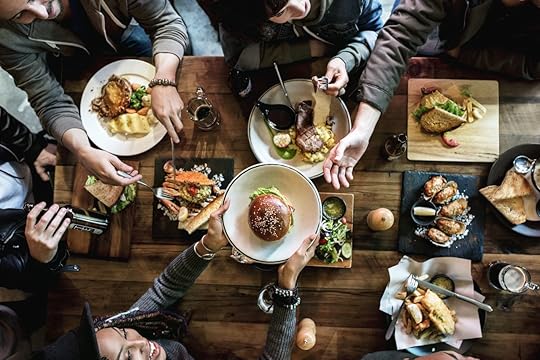
Chef Jose Andres — a Spanish-American who popularized the tapas concept in America — is no stranger to feeding those in need. He led a team of volunteers that served millions of meals to hungry Puerto Ricans after Hurricane Maria, and with the current partial government shutdown stretching into its fourth week, the philanthropic chef is at it again. Andres announced he would serve free sandwiches for lunch to furloughed federal employees in each of his Washington, DC, restaurants during the shutdown. Additionally, Andres will set up a kitchen on Pennsylvania Avenue to feed the unpaid workers right near the White House through his World Central Kitchen project.
Andres isn’t alone, though. Across the country, hundreds of restaurants and businesses are opening their doors — and their kitchens — to those sent home or working without pay in an effort to ease the financial burden. In Denver, the Big Red F Restaurant Group is offering a free lunch to furloughed workers across each of its brands. Neal Brown, a prominent restaurateur in Indianapolis, is offering a meal during all open hours at his Ukiyo Sushi Bar, Libertine Liquor Bar, and Pizzology Craft Pizza & Pub. No matter where you are in the country, the chain Fazoli’s is donating a signature Pizza Baked Spaghetti dish with the purchase of a small drink. Even Canadian air traffic controllers are chipping in and buying pizzas for their American counterparts.
The giving spirit also extends beyond food. Alpine Bank in Colorado has set aside $5 million and pledged to loan federal employees their next paycheck interest-free for six months after the shutdown ends, whether or not they are customers of the bank. Inc Magazine reported on free knitting services in Virginia, and if you’re a furloughed federal worker in DC, the Capitol Lounge is even offering the perfect nightcap: the $5 Border Wall Banger cocktail.
While living without a paycheck is no easy task, more freebies and assistance options are popping up every day. The best way to find restaurants donating food in your city or other charitable services is to check the website of your local newspaper. 

More like this: Canadian air traffic controllers are sending pizzas to US colleagues who aren’t getting paid during shutdown
The post Hundreds of US restaurants are now giving free food to furloughed federal workers appeared first on Matador Network.

Cost of smoking over your lifetime
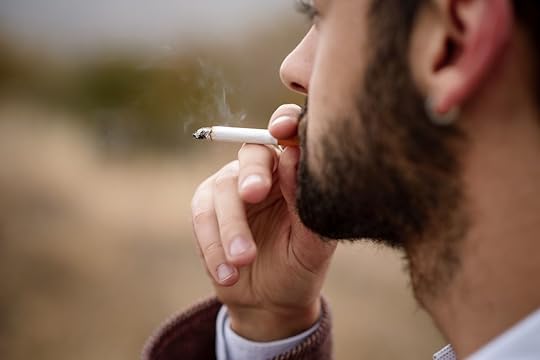
Not that smokers walk around justifying their habit as a sound financial decision, but when you break down the numbers, it’s almost as painful as that perpetual hacking cough.
WalletHub, the personal finance website that researches and ranks everything from hotel rewards programs to best cities to keep your New Year’s resolution, broke down how much it cost the average smoker over their lifetime in each state. And the answers are uglier than an eighth-grade health class slide of a black lung.
Nationwide averages were bleak, but New York fared almost worst of all where the average smoker loses $2,851,475 over their lifetime. New York was only beaten out by Connecticut, where smokers lose $2,854,614.
Georgia, where you can smell the cloud of nicotine from Florida, had smokers who lost the least at $1,396,882 — though that shouldn’t encourage you to pick up the habit if you hail from Georgia. You can see the whole staggering breakdown here.
“Now hold on,” you might say. “I won’t even make $2.8 million in my lifetime, and with New York City rents I’d be lucky if I could spend 2.8 thousand dollars on cigarettes!”
Astronomical city taxes aside, this may be true. But the study didn’t just factor in how much money you spend on cancer-sticks.
It took a look at several factors, including healthcare cost, income lost, other costs like increased homeowners and health insurance. Increased cost of dry cleaning, hair washing, lost security deposits and rental car fees were not, to our knowledge, factored in — though they probably should have been.
The biggest cost across all states was income opportunity cost, where WalletHub took the money a smoker spends on all other costs, and invests it in the stock market over the same period. Taking the historical average market return rate for the S&P 500, minus the inflation rate during the same time period, you find the biggest single cost to n smoker over his or her lifetime. And though there’s no guarantee — and frankly, it’s pretty unlikely — that a financially savvy smoker would have invested all that money in the market instead of, say, beer, it’s still a shocking number to see.
New Yorkers fared the worst here, losing out on over $2.1 million in stock earnings. They also spent the most out-of-pocket on smoking, tallying over $194,000 over their lifetime. They’ll also spend over $240,000 in insurance, lose about $256,000 in income, and $14,600 in other costs.
Missouri residents will spend the least out-of-pocket, a hair over $86,000, losing about $1.4 million total. Californians will lose about $2.2 million, ranking the state 39th.
That’s not to say you’d be summering on the Cote D’Azur if you stopped smoking and put all that money in the stock market. It’s just that in an age where every third headline seems to tell millennials they’ll never own a home or retire, giving up smoking might be a step in a good financial direction. Either way, putting this study on the back of Marlboro packs might be more effective than the health warnings. 

More like this: These retreats will help you quit smoking in paradise
The post New Yorkers lose $2.8 million over their lifetimes by smoking. And they’re not even the worst state. appeared first on Matador Network.

US cities with the most coffee shops

When it comes to a city’s coffee options, more is always better than fewer. Because while you can count on a Starbucks on every corner, you can also count on the worn-out playlist of the same coffee every time. A wide range of options is part of what makes the best coffee cities in the world, well, the best coffee cities. Variety is what keeps our caffeine addiction interesting.
While searching for the best places for coffee lovers to live, ApartmentGuide recently took a look at the US cities with the most coffee shops per capita. The result is a list of some of the best places for coffee lovers to settle down, as well as a where-to guide for serious coffee drinkers who are always in need of a cup.
These are the most caffeinated cities in America.
10. Ann Arbor, Michigan

Photo: Richard Westlund/Shutterstock
There’s one coffee-related business for every 2,825 people in Ann Arbor, Michigan. The variety is definitely there with 37 coffee shops and six coffee-focused cafes. The supply is there, and there’s a good chance the demand is as well. The University of Michigan has 44,000 students who will all need to pull an all-nighter at some point.
9. Everett, Washington
The Pacific Northwest is known for hosting a bunch of coffee addicts. Everett, Washington, is the first of several to make the list with one coffee shop for every 2,752 people. It’s just 25 miles north of Seattle and has a big military population thanks to the Naval Station Everett.
8. Pittsburgh, Pennsylvania
The inclusion of Pittsburgh, Pennsylvania, on this list might surprise you, but don’t underestimate the influence colleges can have on a city. The former industrial capital is home to colleges like the University of Pittsburgh and Carnegie Mellon University. With just over 300,000 people, it’s one of the largest cities to make the list. There are 2,607 coffee-related businesses for every person in Pittsburgh.
7. Minneapolis, Minnesota
Minneapolis, Minnesota, is the country’s coldest urban center with between 60 and 70 inches of snow annually. Nothing warms like a hot cup of coffee, and there are plenty of places to warm up whether you want coffee from a local chain like Caribou Coffee or from one of the many independent shops. There’s one coffee business for every 2,427 people here.
6. Salt Lake City, Utah
Even though more than half of Salt Lake City’s population is Mormon, a religion that abstains from caffeinated drinks, Utah’s capital city has plenty of coffee shops to choose from. There’s one coffee business for every 2,387 people in Salt Lake.
5. Portland, Oregon

Photo: Jess Kraft/Shutterstock
It’s no secret that Portland residents love their coffee. It’s the home of Stumptown Coffee Roasters and regularly makes best coffee city lists thanks to innovative roasters in PDX. There’s one coffee business per 2,322 people in the city.
4. Seattle, Washington
While Portland people might take issue with Seattle topping them in a coffee list, Seattle just beats it out with one coffee business per 2,308 people. There are an incredible 278 coffee shops in the Emerald City, and they’re not all Starbucks.
3. San Francisco, California
There are a lot of tech bros trying to stay awake for some extra disruption hours in San Francisco, California, and there are plenty of coffee shops to satisfy that demand. There’s one coffee-related business in San Francisco for every 2,297 people.
2. Vancouver, Washington
The Columbia River isn’t the only thing that separates Portland, Oregon, and Vancouver, Washington. Three spots on the coffee business per capita list do as well. While there’s surely some spillover between the two, Vancouver is the more coffeed-up with one coffee business per 2,224 people.
1. Berkeley, California
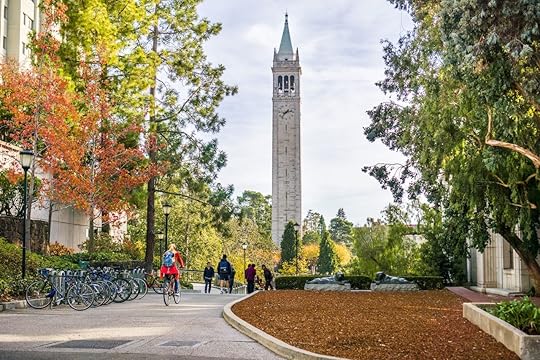
Photo: Sundry Photography/Shutterstock
It should come as no surprise that the top coffee city by virtue of sheer numbers is a college town. Berkeley takes it with one coffee business per 2,073 people. It’s the home of Peet’s Coffee, the University of California, and plenty of caffeinated Berkeleyans. 

More like this: The 5 most epic coffee experiences around the world
The post The 10 US cities with the most coffee shops per capita appeared first on Matador Network.

Best Chinese food in Los Angeles
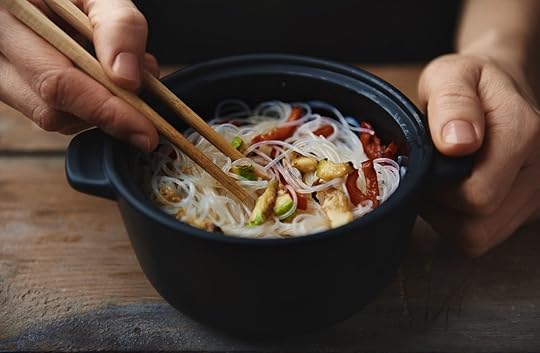
For many, Los Angeles ends at the river. But if you stop there, you fall short of exploring one of the best Chinatowns in America.
The San Gabriel Valley in East LA is known for strip malls, but not the soulless type of strip mall devoid of culture you’d find most everywhere else in the country. Drive down Valley Boulevard and you’ll see that it’s an artery that connects the hundreds of Chinese restaurants in the cities of Monterey Park, Alhambra, San Gabriel, and Rosemead. These strip malls tip you off immediately to the fact that the Chinese food here is the real deal; the open courtyards have nods to Hokkien architecture, almost all of the signs for the eateries are in Asian characters, and most importantly, the parking lots are packed with cars.
Dubbed “New Chinatown,” this enclave of Chinese restaurants is a rare manifestation of the American Dream: a place where immigrant communities can own and operate businesses for their own communities rather than gearing their menus towards tourists — and sacrificing their own culinary standards and cultural traditions in the process. Unlike in the more famous Chinatowns of New York City, San Francisco, and even Downtown LA, these restaurants don’t have to pander to tourist clientele and are instead sustained by locals who really know the cuisine — and demand the best. What results is a compact collection of diverse, authentic Chinese food that’s definitely worth going beyond the river to seek out.
How San Gabriel Valley’s New Chinatown began

Photo: Feng Cheng/Shutterstock
Today, more than half a million Asian-Americans live in the San Gabriel Valley, half of which are Chinese. (The population is more than a third of Los Angeles County’s total Asian-American population.) The San Gabriel Valley first became majority Chinese in the 1970s, but the area saw waves of Chinese migration for over a century. Through the decades, the varying fortunes of industry and flat-out racism (ex: the Chinese Exclusion Act) had seen Chinese immigrants come, go, and be forced out of the East Side of Los Angeles.
The godfather of the modern San Gabriel Valley Chinatown was a realtor named Fred Hsieh, who targeted home sales to Taiwanese clients in the ‘70s, promising a sympathetic community. He dubbed it “Little Taipei” or “The Chinese Beverly Hills” and advertised it in Chinese newspapers. Taiwanese and Chinese communities moved from the central city and out to the suburbs, creating what is thought to be the first suburban Chinatown and one of the first American “ethnoburbs,” a that refers to primarily non-white cities.
The New Chinatown of the San Gabriel Valley began in Monterey Park, just north of the Latinx enclave of East LA. Monterey Park was the first city in the continental US to have a majority Asian population. Over time, the New Chinatown expanded into nearby Alhambra and Rosemead.
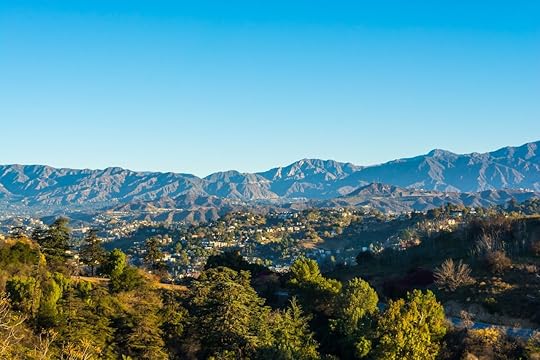
Photo: Eric Urquhart/Shutterstock
Valley Boulevard, which runs from Downtown LA through Alhambra, is the main hub for Chinese restaurants in the San Gabriel Valley, and it’s increasingly drawing eager eaters from across Southern California. When choosing where to eat here, it is insufficient to say that you want Chinese food. You need to think further about which Chinese region’s cuisine you’d like to explore and be open to finding something you’ve likely never tried before. While it’s basically impossible to go wrong here, you could do worse than starting at these key New Chinatown spots:
Best Chinese food in San Gabriel Valley
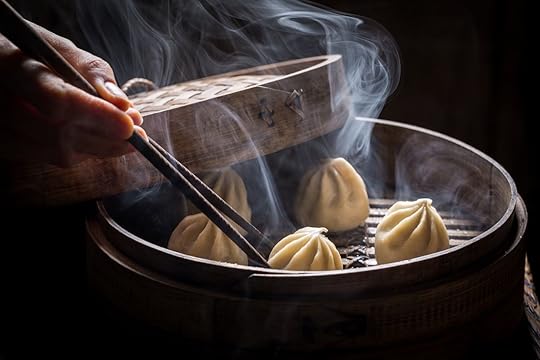
Photo: Shaiith/Shutterstock
Shaanxi Garden in San Gabriel ($$): Opened in 2015, Shaanxi Garden serves food from Shaanxi Province. The northwestern Chinese region was one of the starting points for the Silk Road. The most famous food claim to fame in the region is rou jia mo, which is a crispy bun filled with spiced meat. At Shaanxi Garden, order the rou jia mo and one of the many hand-pulled noodle dishes.
Beijing Pie House in Monterey Park ($): A spot for northern Chinese specialties since 2011. Be sure to order one of the dozen xian bing, which is a pan-fried dough the size of a hockey puck that’s filled with meat or vegetables. Dumplings, savory pancakes, and noodle soups are also solid choices.
Sea Harbour in Rosemead ($$): Where to go for Cantonese dim sum. By some estimations, it’s the best dim sum in LA. It’s a fancy establishment, so plan accordingly. You can’t go wrong with any of the dim sum orders here.
101 Noodle Express in Arcadia ($): Original Angeleno and Chinese fusion food. It’s famous for beef rolls that draw inspiration from Beijing street pancakes, but these have an original California twist. The dish is made with tender, flattened beef that’s rolled in fried flatbreads with sweet sauce and herbs.

Photo: Maggie Rosenberg
Omar’s in San Gabriel ($$): Omar’s serves up western Chinese dishes from the part of China that borders Mongolia. The food is halal and what you’d find in Xinjiang’s Islamic Uyghur cooking. Eat all the lamb and hand-pulled noodle dishes you can here.
Chengdu Taste in Alhambra ($$): A mini-chain of restaurants responsible for popularizing Sichuan flavors in Los Angeles. Order dan-dan noodles if you’re not up to spicy food and the boiled fish with green pepper sauce if you are.
Mian in San Gabriel ($): A casual noodle bar from the same people who started Chengdu Taste. Mian serves big bowls of house-made noodles, like a ramen shop, but with the mala (spicy, numbing) flavors of Sichuan favorites like dan-dan noodles. It’s the best spot for a noodle lunch.
Huy Fong Foods in Rosemead: San Gabriel Valley’s culinary influence isn’t just contained to restaurants. The most iconic structure in the San Gabriel Valley might be the Huy Fong Foods warehouse, best known for its Sriracha sauce (the one with the rooster on it that you know and love). The sauce was developed by a Vietnamese refugee, David Tran, who turned a one-man operation into a hot sauce empire through a few decades of hard work. His company is named for the Taiwanese firefighter that helped him and thousands of other Southern Vietnamese escape during the war. 

More like this: 6 regional Chinese dishes that show off the country’s culinary diversity
The post How LA’s San Gabriel Valley became North America’s best place for Chinese food appeared first on Matador Network.

Things to do in Buffalo in winter
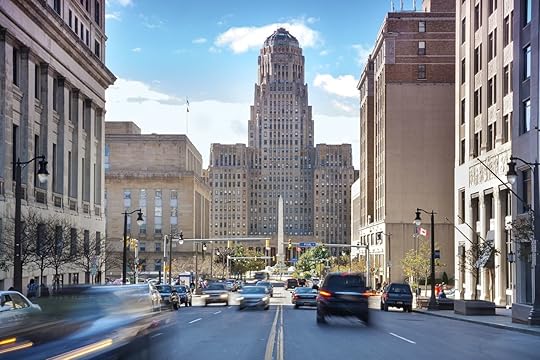
There is an old joke about a beauty contest prize that says something like, “First place gets a week in Buffalo. Second place gets TWO weeks in Buffalo!”
And though Nickel City has moved well past being the butt of awful vacation jokes, landing itself on several “places to visit” lists — including one of our favorites of 2018 — that advice is always almost tempered by, “Go in the summer.”
And while winter in Buffalo might sound about as inviting as a summer internship at a sewage plant, one Buffalo-based company is trying to tout the city as a winter destination. Oxford Pennant, a custom pennant maker who, like most from this city, is passionate about Buffalo, has launched its “Warmest Cold City” sweepstakes, offering up an all-expenses-paid winter trip for one lucky winner.
Annnd cue the jokes about the second prize being two weekends.
But just like people were totally wrong about Buffalo when the weather is nice, so they will learn this snowbound metropolis can be just as awesome when the skies are grey.
Granted, some of the more fascinating only-in-Buffalo activities — like zip-lining between grain silos at Riverworks Brewing or taking a kayak through industrial relics along the Buffalo River — aren’t exactly “fun” in the winter. But a city that spends much of the year under a blanket of snow has found ways to make the most of the cold.
Canalside, the city’s waterfront development along the Erie Canal, has ice skating, ice biking, and bumper cars right in the heart of downtown. The Albright-Knox Art Gallery is open all winter, showcasing some of the most impressive modern art from all over the world.

Photo: amadeustx/Shutterstock
Nearby Niagara Falls turns into an icy winter wonderland this time of year, where the mist from the falls freezes on the branches of trees throughout the state park. The boats won’t be running, but the crowds won’t be there either, and you may find yourself with one of the world’s great natural monuments all to yourself.
But more than magical ice forests and modern art, winter gives you a chance to experience the best thing Buffalo does best: the people.
The Buffalo Wing Trail, which launched last year to showcase the city’s history and neighborhoods through its most iconic food, is an excellent way to do this. Not only because the spicy, greasy wings are especially tasty on cold winter days but also because it’ll take you through the heart of Buffalo’s warm tavern culture at spots like Gene McCarthy’s, Doc Sullivan’s, and Mammoser’s Tavern.
“I think this resonates with something Anthony Bourdain said when he came to Buffalo years ago,” says Brian Hayden, head of Visit Buffalo Niagara and the man credited by many for the rash of good press the city has gotten. “You stop in some of the taverns and find that Buffalo (in winter) is cold and harsh on the outside, and warm and hospitable on the inside.”
That’s not just CVB-speak either. Pop inside the little taverns that anchor the city’s craftsman-house-filled neighborhoods, and you’ll find yourself immediately striking up conversations with people with no pretensions. The cold weather will keep you inside, drinking more and laughing harder. And next thing you know, it’ll be 3:00 AM, and you’ve just made a whole bar full of new friends. Snow be damned.

Photo: Atomazul/Shutterstock
The sweepstakes proved massively popular among local businesses, as everywhere from venerable Ted’s Hot Dog’s to the Swan Street Diner in trendy Larkinville offered gift cards. In all, over $500 in food and drink are at the winner’s disposal, taking you everywhere from craft cocktails at Marble + Rye to Buffalo style pizza and wings from Picasso’s. Plus a $150 Visa gift card to buy shots for your new friends and free admission to the Albright Knox.
You’ll also be staying at the city’s most unique hotel, the boutique Hotel Henry, situated in a beautifully restored gothic mental hospital.
The contest has already drawn over 25,000 entries, so clearly the nation’s interest is piqued. If you want more info — or want to enter yourself — you can find it all here. The contest runs through February 1, and you must complete travel before March 10 when the weather might possibly get nicer. Laugh if you want, but the lucky winner is going to have the most surprisingly enjoyable winter weekend of their life — and return home making jokes about how first prize should really have been two weeks. 

More like this: The ‘Garbage Plate’ might be New York’s most underrated food
The post A Buffalo company wants to give you a free trip there this winter. And you should totally go. appeared first on Matador Network.

Matador Network's Blog
- Matador Network's profile
- 6 followers



